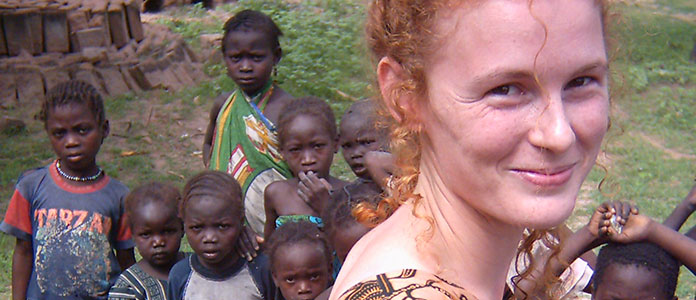 |
| http://faculty.maxwell.syr.edu |
Dorothy Smith
Smith’s
sociological theory is composed of three main points: Standpoint
theory, Bifurcated Consciousness, and Alternative Sociology.
The
first being Standpoint theory, is fully emerging yourself into a
culture to gain a better understanding of the beliefs shared within
it. This meaning that we as observers should not observe from the
outside of a culture but to truly understand another ones culture you
must place yourself within it and do your observing within. With the
hopes of becoming more knowledgeable about each others cultures.
This standpoint theory can be looked at in two ways: experiences and
perspectives. Experiences being the ones that you speak of and
perspectives being the hands-on learning and experiences you put in.
 |
Missionary.
Is one example that I can think of when talking about the standpoint
theory. Most missionary emerge themselves with in the culture they
are trying to serve. They become familiar with the culture and become
comfortable around the people of that culture familiar with their
beliefs. Until they feel comfortable enough to share their with them.
The
second being Bifurcated Consciousness. Bifurcation: distinction
between the world as we experience it and the world as we come to
know it through the conceptual frameworks that science invents” (
Dorothy Smith, 1926). Bifurcated: to divide into two branches or
parts (Merriam-Webster Dictionary, 2013). Dorothy explains Bifurcated
Consciousness to be the identity of a women and as a women
sociologist. Meaning that sociology is traditionally made up of a
male dominated career and most of the studies and books written and
done about sociology are going to be in a male point-of-view
(standpoint). Dorothy see and deal with the Bifurcated Consciousness
herself because she has the division in which she is a female and is
involved in a male dominated career. Her tools: books, case studies
are done from a males point-of-view and her experiences being
different form what her tools are saying because she is female and is
looked at through her point-of-view. This having the barrier of the
Bifurcated Consciousness.
The
third being Alternative Sociology.
“An
alternative sociology would be a means of anyone of understanding
how
the world comes about for us and how it is organized so that it
happens
to us as it does in our experience. An alternative sociology, from
the
standpoint of women, makes the everyday world problematic” (
Lemert,
2013).
The
meaning that we are to learn and explore by using our own knowledge
to better understand and unfold what is going on around us.
















